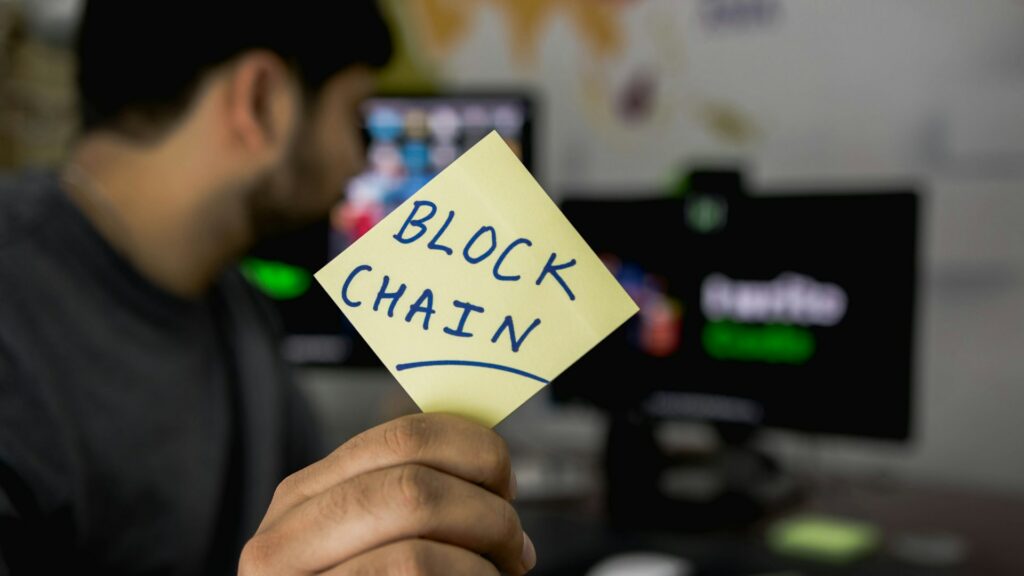The Role of Blockchain Technology in Improving Cybersecurity

The Role of Blockchain Technology in Improving Cybersecurity
In the digital age, cybersecurity has become one of the most important issues we face. Because of the rise in data breaches, identity theft, ransomware, and advanced hacking attempts, traditional security measures often don’t offer enough protection. Blockchain technology comes into play here. Not only is it the basis for cryptocurrencies, but it is also a powerful tool that could change how cybersecurity works in every part of the economy.
What Makes Blockchain Different?
At its most basic level, blockchain can be thought of as a ledger system that is not controlled by a single person. This system keeps data in blocks and then links them together in a chain. Unlike traditional databases, which are centralized and can have a single point of failure, blockchain is a distributed ledger that spreads data across many nodes. Every transaction is safe from tampering, clear, and protected by cryptographic authentication.
Three things that make blockchain technology very appealing for solving cybersecurity problems are that it is unchangeable, open, and decentralized.
Making the Data More Reliable
One of the hardest things to do in cybersecurity is to keep data from being changed. Hackers often try to change databases and add harmful code. Blockchain technology makes it possible to record every transaction or piece of data in a way that can’t be changed without the agreement of the whole network. Because of this, it’s very hard for bad people to change records without being caught right away.
Decentralization makes things less vulnerable.
More traditional security solutions often use servers that are in one place. If a hacker gets into that server, the whole system is in danger. Blockchain gets rid of the chance of a single point of failure by spreading data across many nodes. Even if one node is hacked, the security of the whole system is not affected.
Protection of identity and authentication
One of the fastest-growing types of cybercrime is stealing someone’s identity. Blockchain technology could make identity management better by letting people control their digital identities with encrypted keys, without having to rely on a central authority. Using this strategy makes it much less likely that stolen login information will be used to get into a system illegally.
Things that are connected to the Internet of Things (IoT)
Internet of Things devices, like connected medical devices and smart home assistants, are well known for being easy targets for attacks. Blockchain could make it possible for different devices to talk to each other in a safe way, which would make it possible to build safe networks for them. Blockchain technology helps reduce the risk of bad actors manipulating transactions and getting into systems without permission by using a distributed ledger to keep track of them.
Making the Supply Chain Safer
Cybersecurity is not just about keeping digital systems safe; it’s also about making sure that people trust both digital and physical supply chains. Blockchain technology provides transparency by keeping an eye on every step of a product’s life cycle. In other words, this makes it harder for fake parts or bad code to get into important systems, like those used in the military or healthcare.
Transactions that are both open and safe for business
Fraud in the financial sector is still a major concern in the digital age. Blockchain technology can record every transaction with exact time stamps, making it a reliable way to protect against fraud and money laundering. Because it is meant to be open, it is much easier to find suspicious behavior in real time.
There are problems with using blockchain technology in cybersecurity.
Blockchain technology has a lot of potential, but it also has some problems:
- Problems with scalability: Blockchain networks need a lot of computing power to work on a large scale.
- Energy use: Some blockchain models need a lot of electricity, which makes people worry about how they will affect the environment.
- Problems with integration It might be hard and take a long time to add blockchain-based technologies to existing cybersecurity systems.
- Uncertainty about rules: The world standards for blockchain security are not yet fully developed.
Where Blockchain Is Going in the World of Cybersecurity
As cyber attacks get more advanced, businesses are putting a lot of money into blockchain-based solutions. Here are some things that could happen in the future:
- authentication methods that don’t use passwords and are based on blockchain technology.
- Strengthened data-sharing networks between private businesses and government agencies.
- There are blockchain frameworks that are made just for cloud computing and the Internet of Things.
Blockchain technology is not a cure-all for all cybersecurity problems, but it does change the way we should think about digital trust. Blockchain technology is a stronger way to protect against cybercriminals because it decentralizes data, guarantees immutability, and makes authentication stronger.
As technology continues to improve and blockchain use grows, it could become one of the most important parts of cybersecurity in the next ten years. Blockchain could also help create a digital world where trust and safety are built right into the system.




